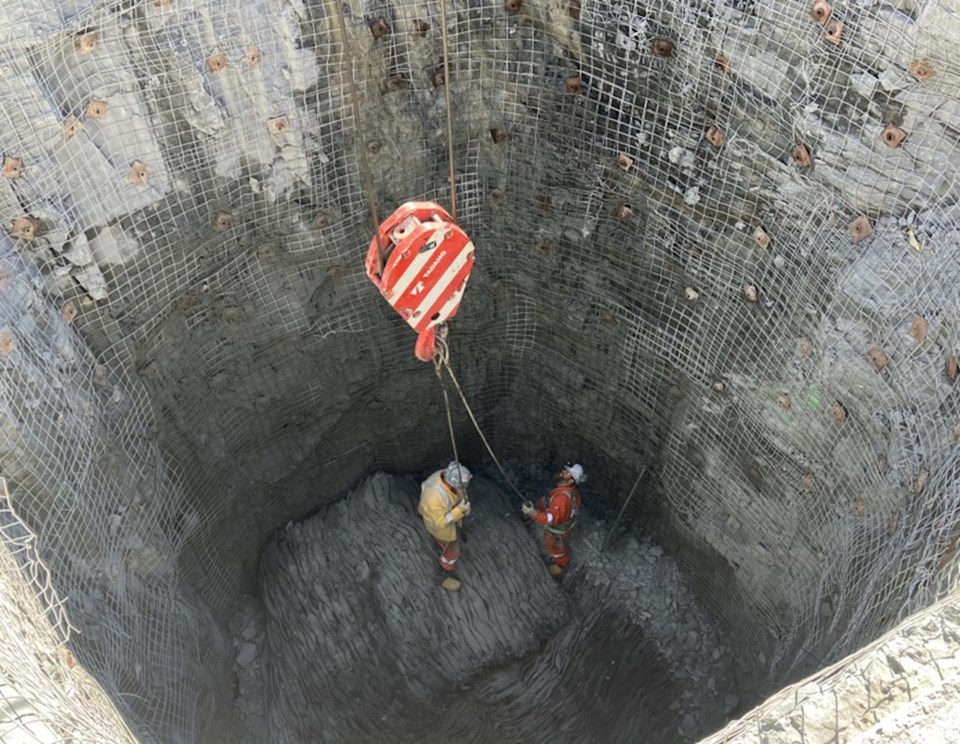Capital spending at the Island Gold Mine in the Dubreuilville-area is expected to be between $210 million and $235 million this year as the third wave of expansion starts to speed up.
The mine continues to be a major catalyst for Alamos Gold, which released its fourth quarter and year-end production results for 2022 this week.
The Toronto-based gold miner also laid out its company-wide plans for 2023 and beyond in setting production gold targets - known as guidance - for the next three years.
Alamos achieved a fourth-quarter record of 134,000 ounces of gold from combined production at Island Gold, Young-Davidson outside Matachewan, and Mulatos in the Sonora State of Mexico; up nine per cent from the previous quarter.
The annual gold production targets for 2022 were met with 460,400 ounces produced at all three mines.
This all was pleasing to John A. McCluskey, company president-CEO, who’s setting strong expectations for greater production and lower mining costs in the years ahead.
“We expect this trend to continue over the next several years with a nine per cent increase in production and five per cent decrease in all-in sustaining costs in 2023 driven by a full year of production from La Yaqui Grande (in Mexico) and strong ongoing performances at our Canadian operations.”
At Island Gold, the focus of this year’s first half is on construction of the hoist house and headframe. Shaft sinking will begin in the latter part of the year.
The US$756-million project will make the mine bigger, operating at lower costs with more efficiencies and productivity.
The company said capital spending on this project will remain at similar levels in 2024 and 2025, then drop off in 2026 once the expansion is complete.
Meanwhile, exploration continues at an aggressive pace to extend the projected 18-year life of the mine.
Alamos said $14 million is earmarked for exploration at Island Gold this year, primarily underground. The focus in years past has been on adding ounces in advance of this latest wave of expansion.
And the strategy has worked. The mine’s gold reserve and resources have tripled in size since 2017 to more than five million ounces.
The main exploration thrust for 2023 is on underground drilling, with 45,000 metres scheduled, in order to tap into gold reserves and resources in the vicinity of current mining operations.
At Young-Davidson, outside Matachewan, Alamos has budgeted $8 million for exploration with 21,000 metres queued up.
Gold production targets here over the next three years are expected to be consistent at between 185,000 and 200,000 ounces projected. Grades mined and processed are expected to be in the range of 2.15 grams per tonne (g/t) to 2.35 g/t in 2023 and remain at similar levels through to 2025.
The grades mined and processed will increase in 2027 as the YD West Zone, first discovered in 2010, comes into play.
Alamos said Young-Davidson has delivered a “strong performance” since the completion of the lower mine expansion in 2020. The operation generated mine-site free cash flow of $100 million in 2022, a “significant milestone” for the second consecutive year.
With a 15-year mineral reserve life, Alamos said Young-Davidson is “well positioned" to generate similar free cash flow in 2023 and beyond.
At Island Gold, the production guidance for 2023 is set at a range of 125,000 ounces to 135,000 ounces. Those numbers blow up to between 175,000 ounces to 190,000 ounces by 2025.
Mining rates will jump in 2026 with the completion of the third phase of expansion, driving a more significant increase in production.
“We have increased our production guidance for 2023 and 2024, reflecting a stronger outlook at both Mulatos and Island Gold,” said McCluskey, “and we remain on track to deliver a substantial decrease in costs over the next three years.
"With higher production and lower costs, we expect to generate growing free cash flow while funding the Phase 3+ Expansion at Island Gold. Once completed in 2026, we expect this to drive a significant increase in production, a further reduction in costs and substantial free cash flow growth,” he added.



